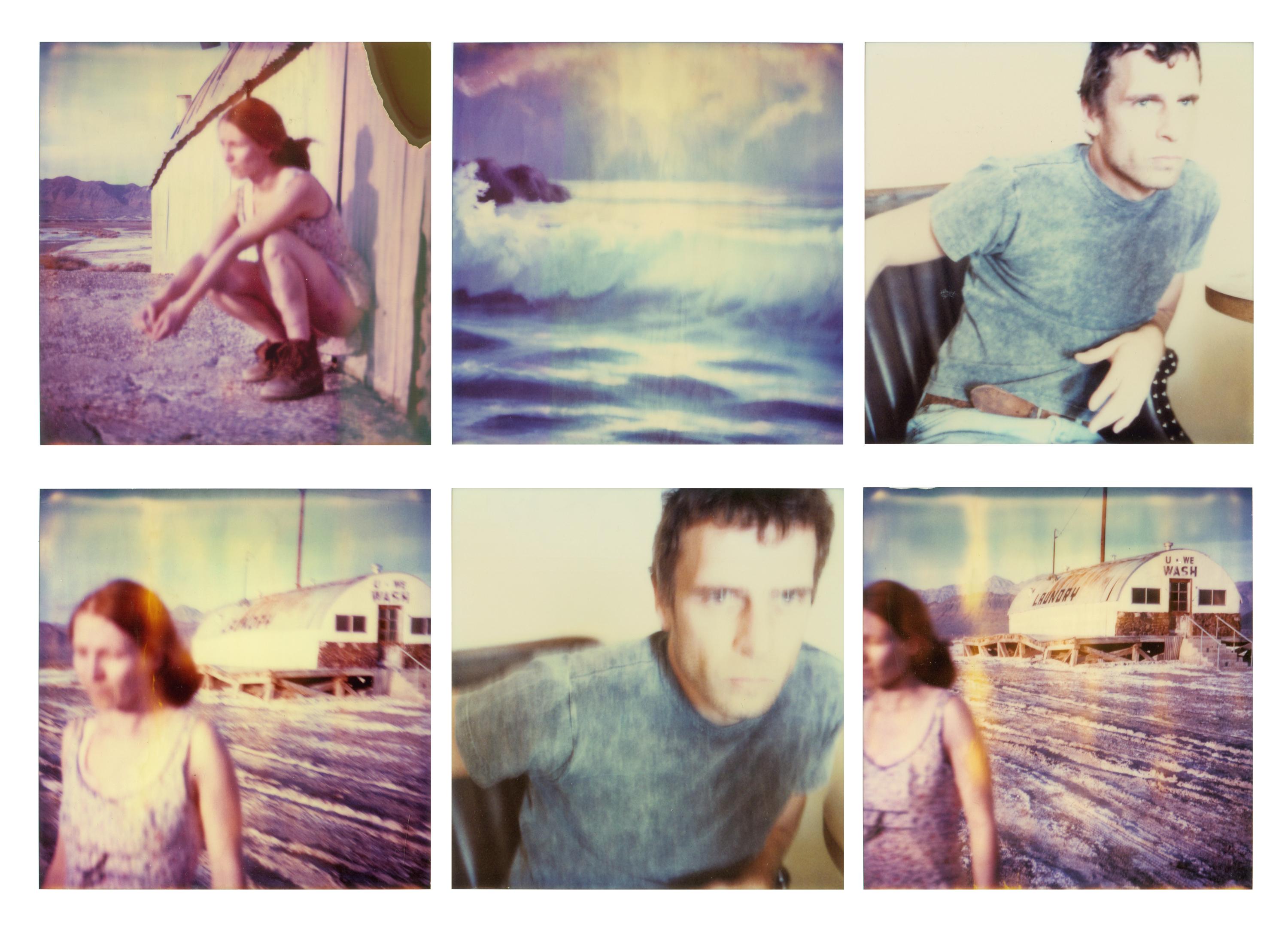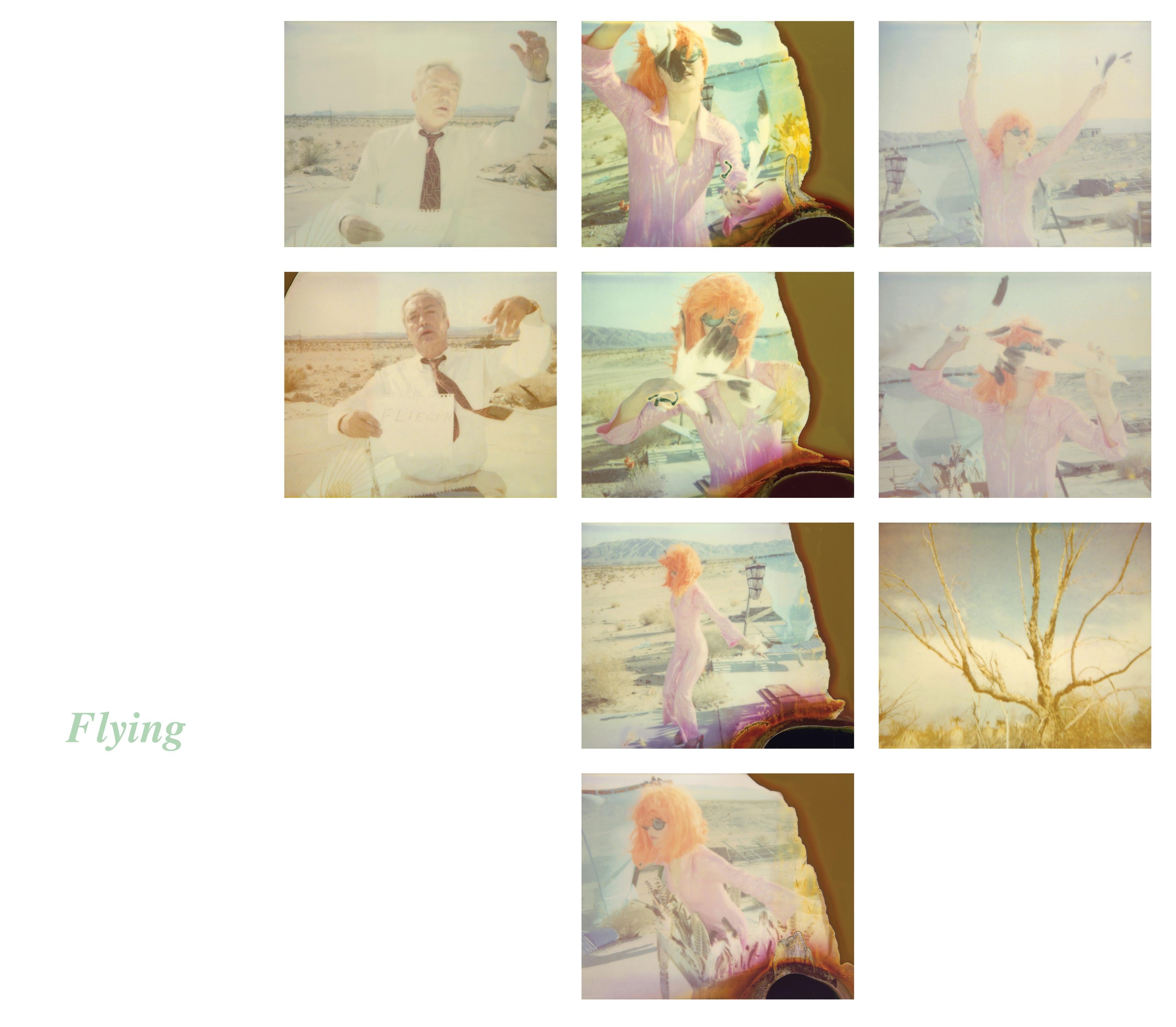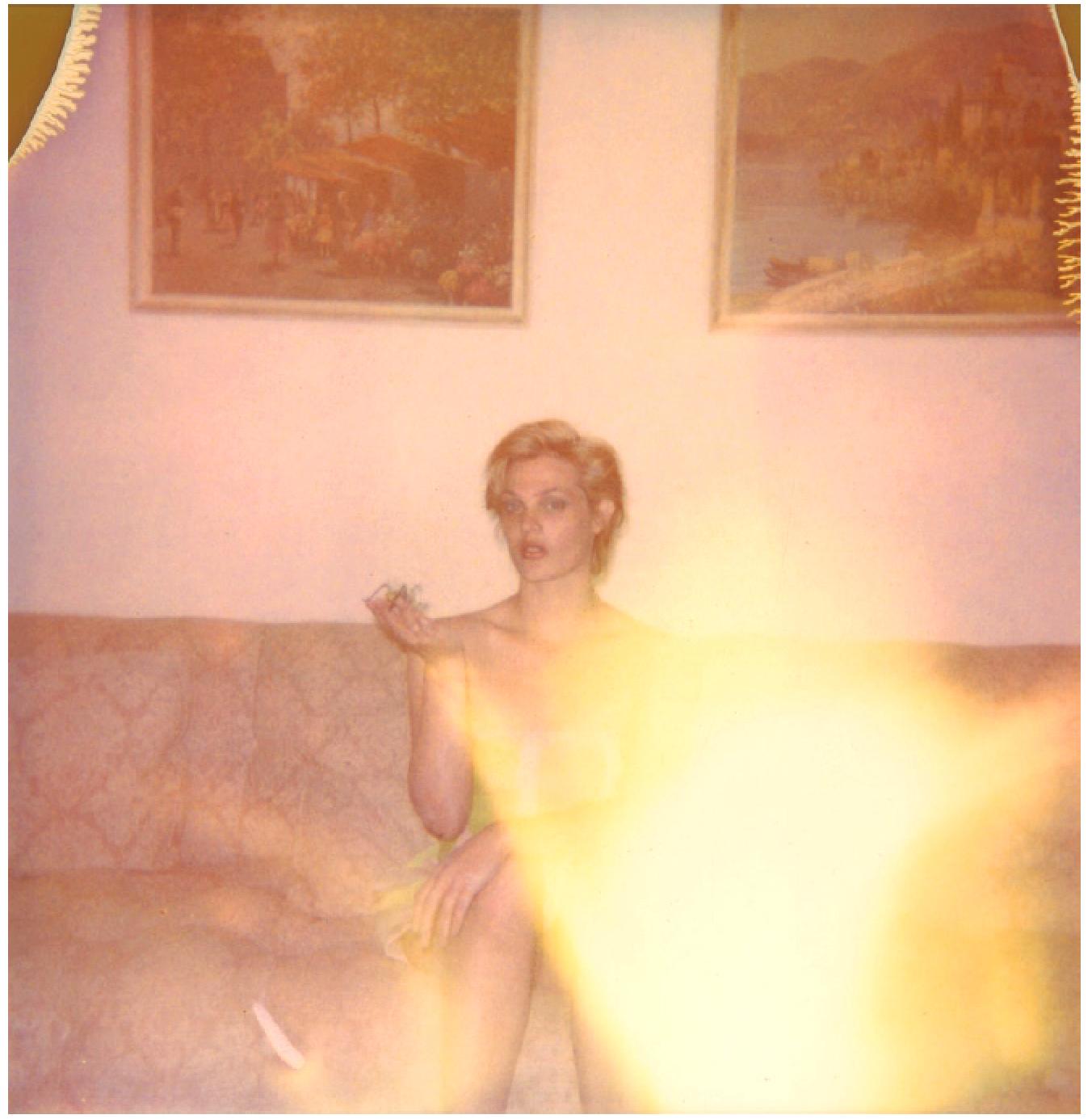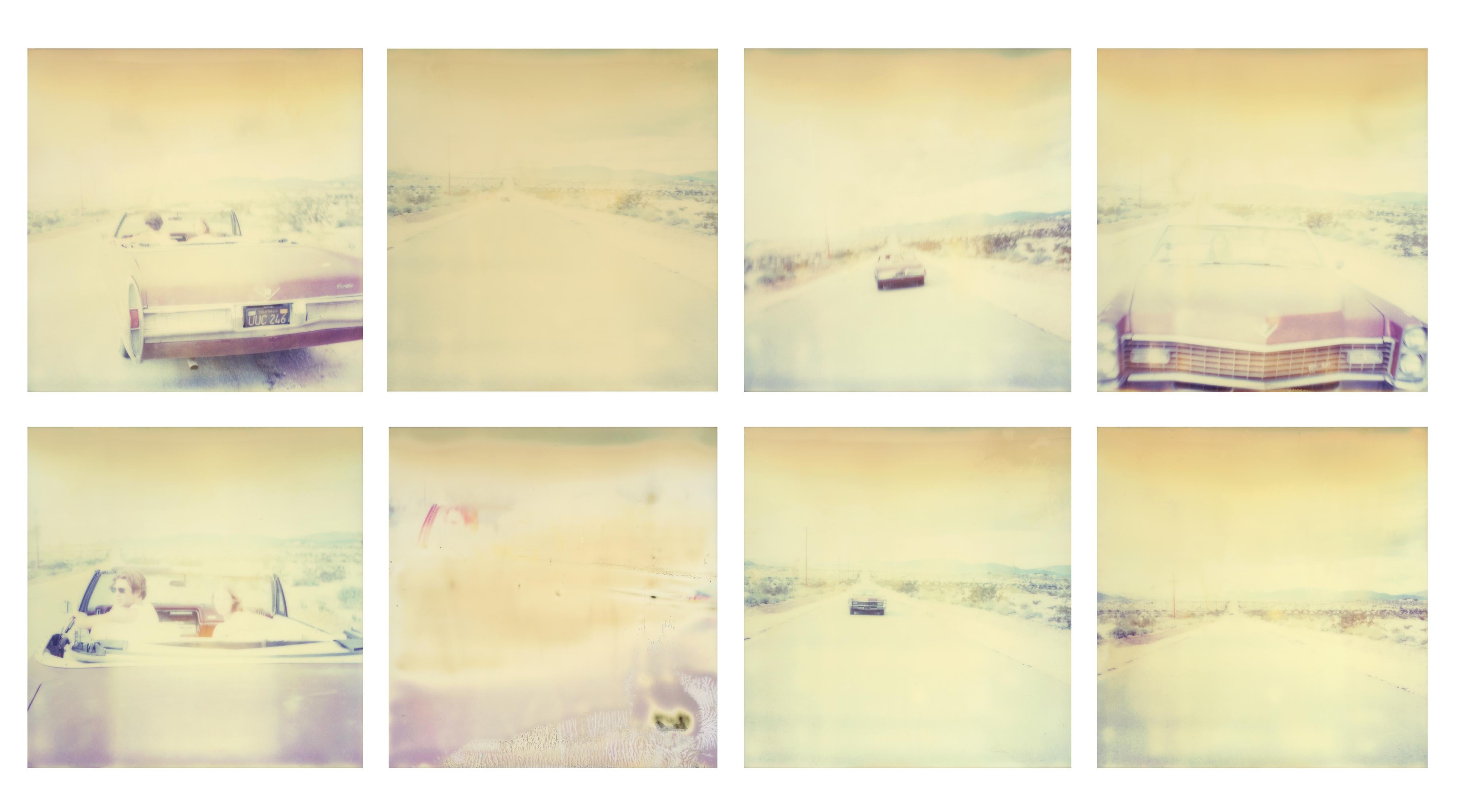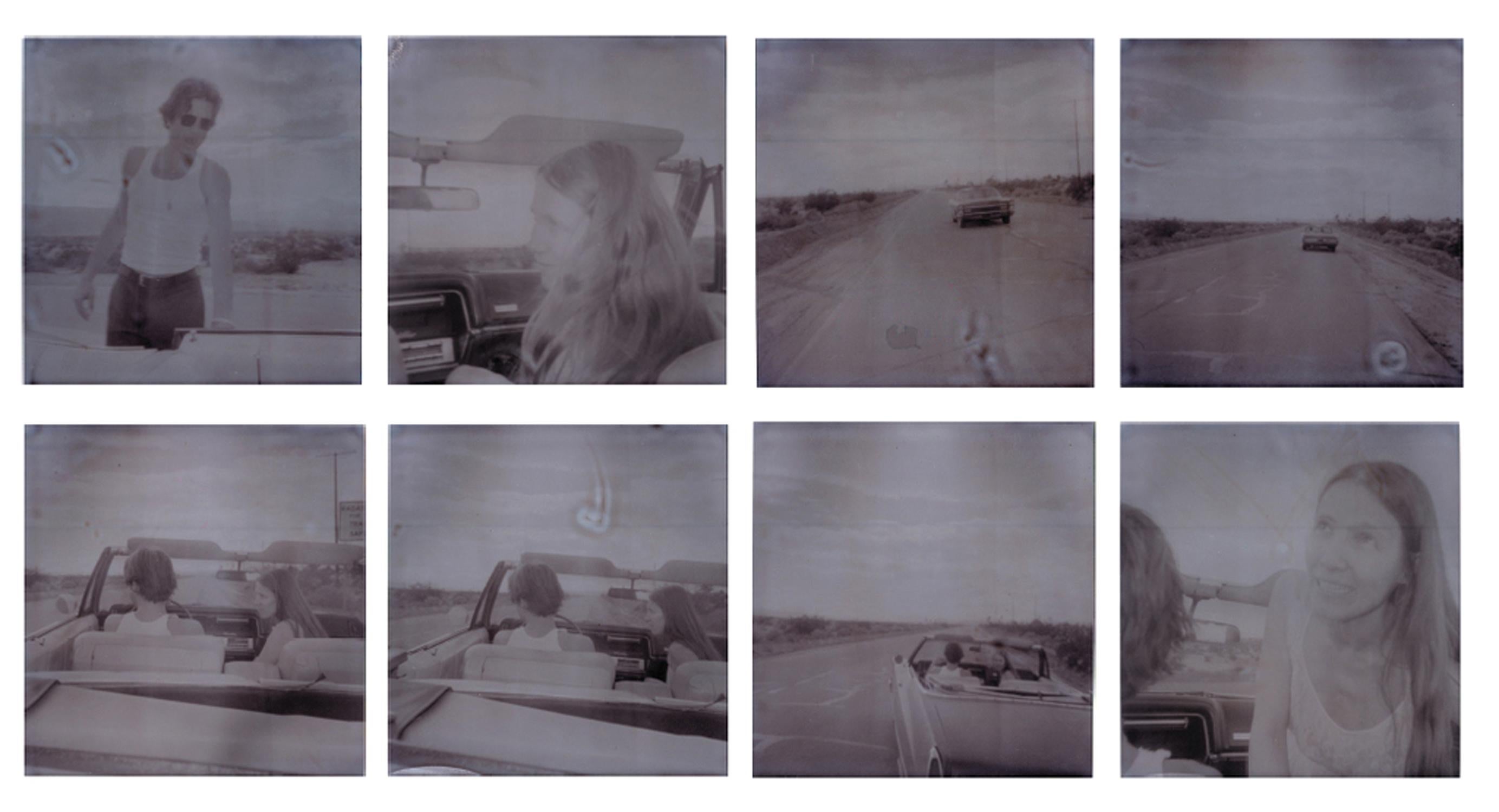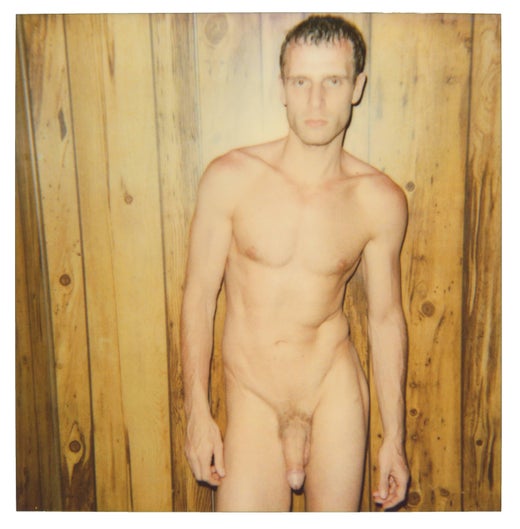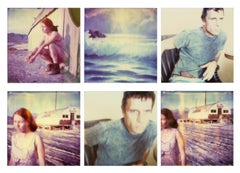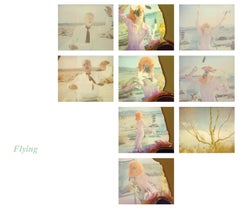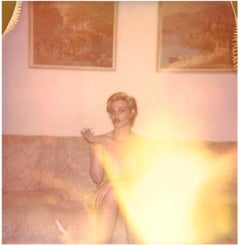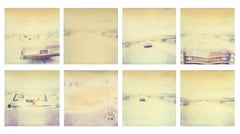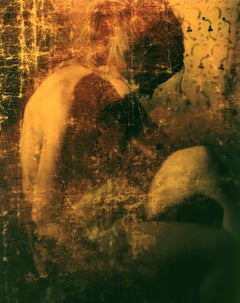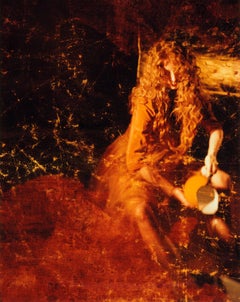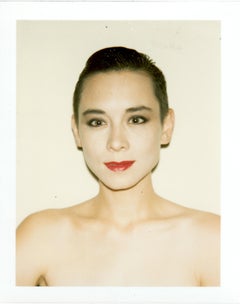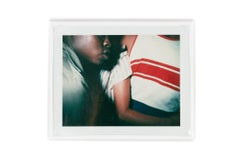Items Similar to Dugong II - Stay Contemporary, blue, Polaroid, Land, photography, Color
Want more images or videos?
Request additional images or videos from the seller
1 of 5
Stefanie SchneiderDugong II - Stay Contemporary, blue, Polaroid, Land, photography, Color2006
2006
About the Item
Dugong II (Stay), from Ryan Gosling's memory sequence
2006, 31x39cm, Edition 1/5, analog C-Print, printed by the artist on Fuji Archive Crystal Paper, based on a Polaroid. Certificate and Signature label
artist Inventory No. 2131.01. Mounted on Aluminum with matte UV-Protection
Torsten Scheid, “Fotografie, Kunst, Kino. Revisited.”,
FilmDienst 3/2006, page 11-13
, Photography Art Cinema. Revisited
Stay expands a traditional connection through new facets
Interwoven between the media of photography and film is a veritable mesh-work of technical, motific, metaphorical and personal interrelationships. Extending from photo-film which, as in La Jetée by Chris Marker (France, 1962) is a montage of single, unmoving photographs all the way to the portrayal of photographic motifs in Hollywood cinema―most recently in Memento (USA, 2000) and One hour photo (USA, 2002)―is the range of filmic-photographic interactions on the one hand, and from the adaption of modes of cinematic production to the imitation of film stills on the other. For instance, with the legendary Untitled Film Stills (1978) of the American artist Cindy Sherman, who later made her debut as a film director with Office Killer (USA, 1997) and thereby, like many others, changed sides: Wim Wenders, Robert Frank and Larry Clark are doubtlessly the most successful of these photographic-filmic border crossers. This brief survey provides only a vague indication of the dimensions of this intermedial field, which in fact extends much further and is constantly being cultivated.
Also as a motif in film, photography has experienced a historical transformation: Photographers were once considered to be technicians who mastered a craft but never achieved the status of artists. Photographer-figures were caught in the allure of beautiful appearance, incapable of penetrating to the actual essence of things. Such depth was reserved for literature or painting. When photography in film touched upon the sphere of art, then most often as its contrasting model, as the metaphor for a superficial access to the world. Coming to mind are Fred Astaire as a singing fashion photographer in Stanley Donen’s musical film Funny Face (USA, 1957), or the restless lifestyle-photographer in Michelangelo Antonioni’s genre-classic Blow up (GB, 1966). For the doubting Thomas, only that exists which can be photographed. He ultimately enters the world of fantasy and thereby the field of art only unwillingly, when he becomes entangled in the world of his images. The last of his detail-enlargements shows only the photographic grain and has lost all connection to reality. The photograph looks as if it had been painted by Bill, the painter who is both friend and antagonist to the protagonist.
Photography as Art
It was first around the end of the last century that numerous filmmakers discovered photography as a genuine art form. In The Bridges of Madison County (USA, 1995) a sensitive Clint Eastwood stands, camera in hand, on the threshold of artistic status, and in Smoke (USA, 1994) a tobacco merchant ripens into a philosopher through his involvement in photography. Finally, in John Water’s parody of the art market, Pecker (USA, 1998), a provincial tom-fool is hyped into celebrated stardom amid the New York art scene because of his blurred snapshots. This film about a postmodern Kaspar Hauser in photographic art (with clear parallels to Richard Billingham, the British shooting star of the nineteen-nineties), not only takes into account the exponentially expanded significance of photography in the art market, but also attributes to photography an extreme degree of conformity to the “operating system” of the visual arts. This admittedly ironic equation of photography and the visual arts is new. It is repeated with much more earnestness in Lisa Chollondencko’s High Art (USA) from the same year. Artistic photography has finally become established in a cinematic context.
Stay
Stay (USA, 2005) could have fitted in seamlessly here. Considering that the films High Art and Pecker establish photography as an ideal art form at the end of the millennium, director Marc Forster (Monster’s Ball, Finding Neverland) takes a step backward; he revives an anti-technical, intuitive concept of art, including the customary clichés about madness and genius. This choice documents less an anachronistic notion of art (especially considering that painting is currently experiencing a Renaissance) than instead the appraisal that paintings are more suitable for representing the free objectification of the mind. Stay is not an artist-film but rather a psycho-thriller in which the borders between dream and reality become blurred.
The psychiatrist Sam Foster (Ewan McGregor) has saved his girlfriend, the artist Lila (played by Naomi Watts) from committing suicide. Now he is attempting to keep another patient, the art student Henry Letham (Ryan Gosling) from killing himself, but succumbs in that endeavor more and more to a whirlpool of inexplicable events. Any further words would already be interpretation and would reduce the significatory potential of the film. The film is loaded with meaning down to the tiniest details―including the notoriously short pants of the protagonist―or it willingly offers itself as a projection screen for speculations. Line-crossings, subjective camera-views of utterly strange figures, and pan-shots in which space and time shift abruptly all serve to confuse the viewer. One scene switches with no transition into paper photography; other scenes hesitate, repeat themselves. The temporal continuum of the film is caught in loops. Figures merge into each other. Miracles occur: blind people regain their sight, the dead are reawakened to life. If it is the continuity of events which distinguishes dream from reality, then everything which the psychiatrist Sam experiences is a dream.
It is precisely here, in this intermediate world of imagination and reality, that the film brings paintings into play, and with them the Polaroid photographs of Stefanie Schneider. For even if the paintress Lila drips paint all over herself in the film, in fact her paintings are without exception based on photographic models which―thanks to modern technology―have been printed onto canvas.
Bizarre Dream-Worlds
Stefanie Schneider’s vague and evanescent Polaroids work towards a painterly impact. The artist, who resides alternately in Berlin and Los Angeles, exclusively uses out-of-date film material. She takes into account chance occurrence, the scarcely predictable waywardness of damaged emulsions. Her associative Polaroids portray a bizarre, film-like world which further enhances the irrealism of Stay. Independently of each other, but not without reason, both Marc Forster and Stefanie Schneider are repeatedly compared with David Lynch. Stranger than Paradise is the title of Schneider’s new photographic volume which, punctually with the start of the film, has been published by Hatje Cantz. The title borrowed from Jim Jarmusch is no accident: Cinema, not artistic photography, is the world from which the former cutter draws her visual models. And whoever has carefully studied the jazzy photographer of her series 29 Palms, CA can recognize beneath the orange-red wigs the cinematic actress Radha Mitchell (Finding Neverland, High Art).
A few motifs from this series, which was presented in an extensive edition by the Lumas gallery, are already sold out. The popularity of the artist is rising. But even if Schneider’s gallery makes this claim, her photography does not in fact play a major role in the film Stay. Instead the presence of the Polaroid photographs onscreen is limited to short photographic sequences, to the―admittedly magical―end credits, and to a few paintings on the set. It is precisely here at the periphery, on the symbolical level, however, that the film unfolds its central meaning―for example, when in Lila’s studio photographs of walruses may be seen, a motif which is familiar to the viewer from a previous scene with the art student Henry. In this new context, the images acquire an impact like the visualization of a strange memory. The pictures do not seem to belong to Lila and already anticipate in an allusive manner the peculiar transformation which her paintings undergo at the end of the film.
The overlapping of the protagonists has a correspondence in the interpenetration of inner and outer worlds: In another scene, in which Henry visits a table-dance bar, there is a photographic sequence. The flood of sharply highlighted, ever-changing images cannot be unambiguously situated, however. On the one hand, it can be read as a projection in the depicted space; and on the other hand, it presents itself as the stream of consciousness of the protagonist, whose blurred scraps of memory it portrays.
Art as Key
The photographs do not function in Stay as props for the plot, but instead they are metaphors for the interpenetration of dream and reality. They are not so much motifs as rather means of representation. On the one hand, they are almost seamlessly integrated into the portrayal, but on the other hand―as works of art―they play a key role in the reception of the film. Whoever considers the cinema to be simply an escapist pleasure must have the impression, with regard to Stay, of being in the wrong film. Stay repudiates all expectations regarding genre and demands a fundamental shift of attitude. One can argue about whether this claim is justified, but the film demands to be viewed as a work of art. Not in the sense of contemplative immersion, but in terms of an active reception. Meaning cannot be derived directly from the film. Meaning is an addition made by the viewer. If Stay has a special message, then it is this: Everyone constructs his or her own film. In fact, in Stay there is a short scene which takes place in the art academy and may be understood as an interpretative instruction. On the basis of a painting, the professor offers a lesson which can be expressed in two simple formulas. First, everything is significant. And second, everything is somehow connected with everything else. The individual elements of the film must be decoded and set into relationship with each other.
After the Film is Before the Film
With director Marc Forster and photographic artist Stefanie Schneider, two coequal partners are at work. The photographer brings her style-generating aesthetic into the cinematic representation. She appears as the author of her images, not as the executor of instructions from the director. This status is also evident in the participation of the artist in the press conference and in the fact that the premiere party took place in Stefanie Schneider’s gallery Lumas. Whoever came early or stayed late could here take an unobstructed look at the pictures and review the film at leisure. With regard to the photographs, one is inclined to see the film a second time. But also in the retrospective photographs after the film, the puzzle-game continues. “This is the way it was,” each photograph seems to say. But were things really that way? In fact, the poetically blurred Polaroid photographs do not provide a documentation, but rather an interpretation of the film from an artistic perspective which is lost in reverie. On the one hand, they make selections from the cinematic plot, and on the other hand, they transcend these happenings.
The film photos become autonomous and make reference, not to filmic “facts,” but to other possibilities―to that which might have been, to the inherent fictionality of the film.
- Creator:Stefanie Schneider (1968, German)
- Creation Year:2006
- Dimensions:Height: 12.21 in (31 cm)Width: 15.36 in (39 cm)Depth: 0.12 in (3 mm)
- Medium:
- Movement & Style:
- Period:
- Condition:Ships in a wooden box.
- Gallery Location:Morongo Valley, CA
- Reference Number:1stDibs: LU65234261952
Stefanie Schneider
Stefanie Schneider received her MFA in Communication Design at the Folkwang Schule Essen, Germany. Her work has been shown at the Museum for Photography, Braunschweig, Museum für Kommunikation, Berlin, the Institut für Neue Medien, Frankfurt, the Nassauischer Kunstverein, Wiesbaden, Kunstverein Bielefeld, Museum für Moderne Kunst Passau, Les Rencontres d'Arles, Foto -Triennale Esslingen., Bombay Beach Biennale 2018, 2019.
About the Seller
4.9
Platinum Seller
Premium sellers with a 4.7+ rating and 24-hour response times
Established in 1996
1stDibs seller since 2017
1,023 sales on 1stDibs
Typical response time: 2 hours
- ShippingRetrieving quote...Shipping from: Morongo Valley, CA
- Return Policy
Authenticity Guarantee
In the unlikely event there’s an issue with an item’s authenticity, contact us within 1 year for a full refund. DetailsMoney-Back Guarantee
If your item is not as described, is damaged in transit, or does not arrive, contact us within 7 days for a full refund. Details24-Hour Cancellation
You have a 24-hour grace period in which to reconsider your purchase, with no questions asked.Vetted Professional Sellers
Our world-class sellers must adhere to strict standards for service and quality, maintaining the integrity of our listings.Price-Match Guarantee
If you find that a seller listed the same item for a lower price elsewhere, we’ll match it.Trusted Global Delivery
Our best-in-class carrier network provides specialized shipping options worldwide, including custom delivery.More From This Seller
View AllAlaska (Stranger than Paradise) analog - 6 pieces
By Stefanie Schneider
Located in Morongo Valley, CA
Alaska (Stranger than Paradise) - 2002
Edition of 10, plus 2 Artist Proofs.
43x66cm installed, 20x20cm each.
6 Archival C-Prints, based original 6 Polaroids.
Signature and Certif...
Category
Early 2000s Contemporary Color Photography
Materials
Archival Paper, Photographic Paper, C Print, Color, Polaroid
Flying (29 Palms) - including the book 'A Half Forgotten Dream'
By Stefanie Schneider
Located in Morongo Valley, CA
Flying (Stage of Consciousness) - 2007
including Stefanie Schneider's new monograph "A Half Forgotten Dream" signed. 192 pages, hardcover, published by Snap Collective, 2024.
featu...
Category
Early 2000s Contemporary Color Photography
Materials
Archival Paper, Photographic Paper, C Print, Color, Polaroid
Cricket on the Nose Scene - Untitled II - 29 Palms, CA, analog, mounted
By Stefanie Schneider
Located in Morongo Valley, CA
'Untitled II' (Cricket on the Nose Scene) from the 29 Palms, CA series - 2009
56x56cm, Edition 1/5,
analog C-Print, hand-printed by the artist, based on a Polaroid
signed on verso,...
Category
Early 2000s Contemporary Color Photography
Materials
Metal
Leaving III (Sidewinder) - Polaroid, 21st Century, Contemporary
By Stefanie Schneider
Located in Morongo Valley, CA
Leaving III (Sidewinder) - 2005
60x110cm,
Edition of 10.
Archival C-Print based on a Polaroid.
Signature label and Certificate.
Artist Inventory No. 3463.
Not mounted.
2005 SID...
Category
Early 2000s Contemporary Portrait Photography
Materials
Archival Paper, Photographic Paper, C Print, Color, Polaroid
2 Stefanie Schneider's Minis 'Till Death do us Part' & the Vinyl - signed, loose
By Stefanie Schneider
Located in Morongo Valley, CA
2 Stefanie Schneider's Minis 'Till Death do us Part' - 2005 -
signed on front,
not mounted.
2 Archival Color Photographs based on 2 Polaroids.
Polaroid sized open Editions 1999...
Category
Early 2000s Contemporary Color Photography
Materials
Archival Paper, C Print, Color, Lambda, Polaroid
Leaving (Sidewinder) - Polaroid, 21st Century, Contemporary
By Stefanie Schneider
Located in Morongo Valley, CA
Leaving II (Sidewinder) - 2005
60x110cm,
Edition of 10.
Archival C-Print based on the Polaroid.
Signature label and Certificate.
Artist Inventory No. 3436.
Not mounted.
2005 SIDEWINDER - Director / Artist / Camera / Editing - starring JD Rudometkin, Stefanie Schneider, music by JD Rudometkin
private history turned into an intimate mythology of elemental fantasies where reality is perceived through a veil of psychedelic memories and unconscious projections. such is a collection of passions and dreams, an uncanny diary of ephemeral narratives and mental intensities in Stefanie Schneider’s painterly photographs where subjectivity of an ontological doubt uses a poetics of pastische as a vehicle for an intertextual journey towards the truth and the authenticity of primary emotions. here time is immersed in a nostalgic suspense of oneiric dimension, a sort of ambiguous coma of silence and comfort, and open space embraces a psychotic landscape of solitude and accidental pleasure. fetishisized surface of extreme feelings gives a stage for an unsolicited promise of unconditional love and unlimited freedom, a promise framed by sensual tension between fulfillment and expectation. (Adam Budak, Kunsthaus Graz, Oct 2005)
Sidewinder
There’s blood on the dress that hangs in the Airstream trailer outside 29 palms. With the pistol in her sweat palm touching at his temple. Tell me what god’s gonna do for me and you now Stevie’s saying while Brother John Baptiste looks there across to where her cat seems weak and fed. All the good that comes to me from my believing man, I wanna hear about it said to me like that. Just the way you breathed it like you did 10 minutes ago when I was wrapped so well around your head. Silence then. A baby screams his mother out in the dessert night who wakes so late. Orion is a belt John Baptiste looks at through the torn-screen trailer window. There, touching his calf are vipers crawling now across her feet between his knees in front of her he kneeling for his life and they are full of venom with their broken fangs.
A gun at head, where even his breath, so short, is preaching. He’s in a wheat field. John Baptiste. Counting birds on telephone wires hung low in afternoon where his mother’s call cannot now reach him. There she stands a weeping willow with the sidewinder underneath the trailer step a drop of blood upon her ankle with the bullet through its head. A scar follows sweat palm to wrist. Torn Stevie. Scars from the weapon to her toes an accidental act of God her father said. On Vaness at California 16 years ago but who’s counting 6 bullets for the barrel wait beside the temple. The long white shaft of tissue hemmed together gods tattoo along her ribs, hip to breast. She wants to fuck the preacher in her trailer with his bible on the alter front row Stevie asks forgiveness holy father from the car that shook her bones apart. John Baptiste asks to pray before she leads his temple head...
Category
Early 2000s Contemporary Portrait Photography
Materials
Archival Paper, Photographic Paper, C Print, Color, Polaroid
You May Also Like
Elena Seated
By Jack Perno
Located in Chicago, IL
Archival Pigment Print
Edition of 25
Print size: 38 H x 30 W inches
Frame size: 54 H x 44 W inches
This piece is a digital reproduction of an original 8 x 10" polaroid that was man...
Category
21st Century and Contemporary Contemporary Color Photography
Materials
Archival Ink, Archival Paper, Inkjet, Polaroid
Price Upon Request
Elena Washing
By Jack Perno
Located in Chicago, IL
Archival Pigment Print
Edition of 25
Print size: 38 H x 30 W inches
Frame size: 54 H x 44 W inches
This piece is a digital reproduction of an original 8 x 10" polaroid that was man...
Category
21st Century and Contemporary Contemporary Color Photography
Materials
Archival Ink, Archival Paper, Inkjet, Polaroid
Price Upon Request
Tina Chow
By Andy Warhol
Located in Santa Monica, CA
Work comes with a Certificate of Provenance issued by Christie’s.
Stamped on the verso by the Estate of the Artist and The Andy Warhol Foundation for the Visual Arts. Foundation num...
Category
1980s Contemporary Portrait Photography
Materials
Polaroid
$24,000
Private Views
By Barbara Crane
Located in Saint Louis, MO
Barbara Crane
Private Views, 1980-4
Polaroid type 59
Framed Dimensions: 14 1/4 x 12 1/4 inches (36.2 x 31.1 cm)
Image Dimensions: 4 1/2 x 5 1/5 inches (11.4 x 13.2 cm)
Edition 1/1
Category
Late 20th Century Contemporary Color Photography
Materials
Polaroid
untitled (Fountain)
By Frank Yamrus
Located in New York, NY
Digital C-print (Edition of 11)
Signed, dated, and numbered, verso
This photograph is offered by ClampArt, located in New York City.
Please note that prices increase as editions sel...
Category
Early 2000s Contemporary Portrait Photography
Materials
C Print
Iconic Contemporary Color Fashion Photography 1960s, Later, Girl in the Light
By Ormond Gigli
Located in New york, NY
An iconic 20th Century fashion later photograph Girl in the Light, 1967 by Ormond Gigli is a c-print. Available in color and B&W. This color version is in an edition of 10. 38" x 38" image size, 44" x 44" paper size.
The print is signed, titled, and numbered on recto (front of photo) by the photographer.
Provenance: Gigli Estate
***
Artist’s Bio:
Ormond Gigli (1925-2019) published in the top magazines, such as LIFE, Time, and Paris Match. Assignments took the photographer around the globe. Gigli's celebrity portraits included Sophia Loren (at age 21), Anita Ekberg, Marcel Duchamp, John F. Kennedy, Halston, Gina Lollobrigida, Diana Vreeland, Marlene Dietrich, Judy Garland, among others. The most famous of Gigli's favorite photographs were self-assigned, such as one of the legendary fashion photographs of the 20th century, Girls in the Windows.
***
Available at 99Prints...
Category
1960s Contemporary Color Photography
Materials
Photographic Film, Archival Pigment, Digital Pigment, C Print
Recently Viewed
View AllMore Ways To Browse
Vintage Woodland Fabric
Vintage Yankees Poster
Wade Ceramic
Walter Dendy Sadler
Warhol Einstein
Watch Me Large Clock
Watercolor Tin Box
Welsh Stoneware
Wendy Ross
White Steed Painting
Will Barnet Poster
Willem Sandberg
Willem Van Aelst
William Kalwick Paintings
William Rowe
Woman Riding Bike
Wood Mid Century Menorah
Yayoi Kusama Skateboard
